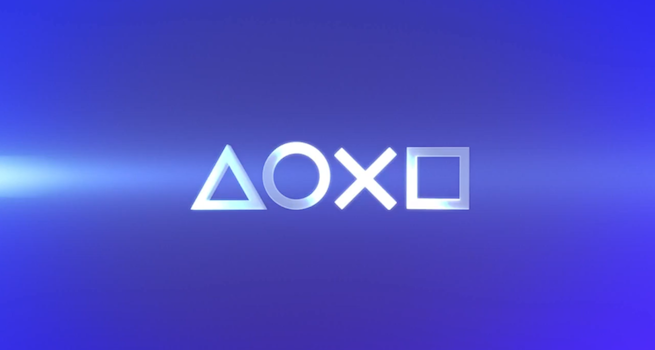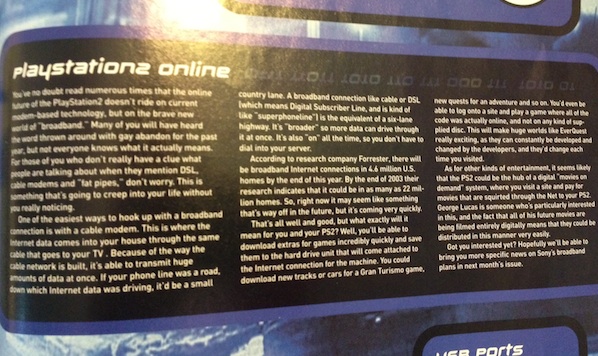Follow our PlayStation 4 coverage
Forums are igniting with discussions. Twitter is rife with speculation. And hardware rumors old and new are popping up across game blogs and news sites. This can only mean one thing.
Happy new console day, everybody!
At least, that’s what we think is going to happen. Sony Computer Entertainment is only a few hours away from its big announcement at 3 p.m. Pacific in New York City. Though it hasn’t said anything about it, the leaks and teasers of the last few weeks clearly point to the coming-out party of the PlayStation 4 (or whatever Sony is going to call it).
But console reveals are tricky. Lofty promises are often made and then broken by the time of the actual launch. Games depicted in promotional trailers may not represent the final product, and in some cases, may never see the light of day again. The company obviously wants to show its fancy new system in the best possible way, but if experience has taught us anything, it’s that we should view these momentous occasions with a healthy dose of skepticism.
That’s why we decided to dig through the past three PlayStation reveals — PlayStation, PlayStation 2, and PlayStation 3 — and remind you of Sony’s track record of preparing its new consoles for launch. Some things it did were funny, other decisions left us scratching our heads, and a few choices were just plain weird.
PlayStation
Announced: October 1993
Release date: 9/9/1995 (U.S.)
Launch price: $299
Number of launch games: Eight
A new challenger appears:
In the early ’90s, Nintendo joined forces with Sony to create the Play Station (with the space), a console that featured the cartridge-based Super Nintendo Entertainment System combined with a CD-ROM drive. But that didn’t work out.
In short, Nintendo wasn’t satisfied with the business terms of its partnership, so during the 1991 Consumer Electronics Show, it announced that Philips, a Sony rival, would be the one developing a CD-ROM expansion to the SNES. This came a day after Sony publicly revealed its Play Station plans.
Sony executives were understandably furious. But at least two of them, a former Sony engineer named Ken Kutaragi — often called the “father” of PlayStation — and president Norio Ohga, didn’t want to scrap the project. After facing some internal strife, Kutaragi spearheaded the creation of a standalone 32-bit system to compete against both Sega and Nintendo. It re-branded the project simply as “PlayStation,” which made a big splash at the first Electronic Entertainment Expo (E3) in 1995. At the time, the PlayStation was the scrappy underdog in a market dominated by giants.
Fun facts and broken promises:
- During the U.S. rollout at E3 ’95, Sony said “20-Plus” launch games would coincide with the console’s release (at the 4:50 mark in this clip). It delivered less than half that amount.
- Early marketing in the U.S. labeled the PlayStation brand as a lifestyle, not just a product or toy. Its TV ads featured such cryptic messages like “U R Not E” (You are not ready) and “ENOS Lives” (Ready Ninth of September). In the U.K., advertisements proclaimed the console was “more powerful than God.”
- The disembodied head known as Polygon Man was the first PlayStation mascot. But disagreements about marketing led to the poor guy’s quick demise prior to launch. About 17 years later, developer Superbot Entertainment brought him back as the final boss in PlayStation All-Stars Battle Royale.
- On 9/19/00, Sony released a new, petite PlayStation model called the PS One for $99. This set the precedent for a slimmer line of systems during the latter part of a console cycle, as we saw with the redesigned versions of the PlayStation 2 and PlayStation 3.
PlayStation 2
Announced: March 1999
Release date: 10/26/2000 (U.S.)
Launch price: $299
Number of launch games: 26
The “future” of entertainment
By the time Sony was ready to show the sequel to its first console, the PlayStation brand had become a household name … but the PlayStation 2 wasn’t going to release for at least another year. Meanwhile, Nintendo was lagging behind with the Nintendo 64 (released in 1996), and Sega claimed it was already ushering in the next generation with the launch of the Dreamcast on 9/9/99.
One thing that the Dreamcast didn’t have, however, was a DVD player.The built-in DVD drive was a big selling point for the PS2 — the format was quickly taking over as the preferred movie-watching experience at home, with superior sound and picture quality (and tons of extras like audio commentaries) compared to VHS tapes. This also meant that developers could move on from making games on CD-ROMs and take advantage of the larger space in DVD discs.
In contrast, Nintendo stubbornly stuck by its cartridges and Sega relied on a combination of CDs and GD-ROMs (its own proprietary discs). With strong third-party support and backward compatibility with the PS1 library, Sony had more than enough weapons to take on the competition in the fall of 2000.
Fun facts and broken promises:
- The PS2 suffered from a severe shortage at launch, since Sony was only able to ship half a million units to retailers by October 26. I always considered myself lucky in finding one three months later at a KB Toys store.
- Early information suggested that the PS2 would have a robust online experience with downloadable content and, as some speculated (pictured above), even movies on-demand. A network adapter and hard drive did eventually come out, but Sony’s actual broadband plans for it never lived up to the hype.
- In a March 2, 1999 press release, Sony touted that the PS2 was capable of producing “movie-quality 3D graphics in real time” with its Emotion Engine and Graphics Synthesizer. This led some to surmise that PS2 games could look as good as Pixar’s Toy Story films.
- Perhaps the most memorable piece of marketing to come from the PS2 launch was the stylish commercial advertising a faux PlayStation 9 in the year 2078 (posted below). Good news: We’re only five more consoles away. Bad news: Most of us will probably be dead by then.
PlayStation 3
Announced: May 16, 2005
Release date: 11/17/06 (U.S.)
Launch price: $599 for the 60GB system and $499 for 20GB
Number of launch games: 14
Big mistakes
While still enjoying the enormous success of the PS2, Sony revealed the PlayStation 3 at E3 2005 — and then filled in the rest of the time with a mind-numbing presentation about pixel shaders, floating-point operations, and other boring stats supposedly derived from the PS3’s Cell processor and RSX GPU. Afterward, the company still didn’t show off the console in action, instead putting it behind glass for onlookers to take pictures of.
A year later at E3 2006, Sony president and chief executive Kaz Hirai announced something we all didn’t want to hear: Pricing for the PS3 started at 500 bucks. That made it $200 more expensive than the cheapest version of Microsoft’s Xbox 360, which already had been in the market for a full year by the time the PS3 came out. And Nintendo would release its new motion-controlled console, the Wii, two days after the PS3 launch at just $249.
Much like it did with DVDs and the PlayStation 2, Sony built a Blu-ray player into the PS3 console in hopes of winning the high-definition format war against HD DVDs. But with such obnoxiously high price points, it wasn’t enough to convince consumers to adopt Blu-ray en masse. According to a 2005 interview with Ken Kutaragi, the company wanted you to work hard for it. “We want people to feel that they want it, irrespective of anything else,” he said.
I bought my first PS3 in 2007 with a brand new credit card (foolish, I know), which coincidentally, was also the first time I felt the meaning of the word ‘debt.’ Are you happy now, Kutaragi?
Fun facts and broken promises:
- Of all the non-playable demos shown at the 2005 press conference, Killzone 2 (posted above) was the most contentious. Sony passed it off as real gameplay footage, but as astute observers already figured out, that was a load of crap.
- The PS3 controller went through dramatic changes before the launch in 2006. In 2005, Sony showed off what looked like a strange, plastic boomerang with analog sticks. It reverted to the old DualShock design before launch, but the controllers still lacked their characteristic rumble — instead, they used the Sixaxis motion technology. Sony’s then-president of worldwide studios Phil Harrison explained that rumble was a “last generation feature.”
- As promised, backward compatibility with PS1 and PS2 games did work for the PS3 … but only with the 60GB, 20GB, and original 80GB systems. Support for PS2 emulation disappeared when Sony started manufacturing newer models in 2007.
- The PS3 shown in 2005 was not the same PS3 released in 2006. Specifically, Sony cut down on the number of ports: Originally, it had six USB ports (four in front, two in the back), three Ethernet connections, and two HDMI outputs. The actual console people hooked up to their TVs shipped with only four USB ports, one Ethernet connection, and a single HDMI output, among other things.
Special thanks to Jacob Lopez.
VentureBeat's mission is to be a digital town square for technical decision-makers to gain knowledge about transformative enterprise technology and transact. Learn More


